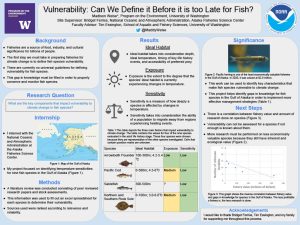Vulnerability: Can We Define It Before It Is Too Late For Fish?
As the effects of climate change become more prevalent in the coming years, it is imperative that species most vulnerable are identified in order to inform climate action. The purpose of this project is to define vulnerability in the context of fisheries. This was achieved through a comprehensive literature review of nine fish species in the Gulf of Alaska. The information collected through literature review was then compiled into a data matrix that was overviewed by species experts at the National Oceanic and Atmospheric Administration (NOAA) Alaska Fisheries Science Center (AFSC). Additionally, the relevance and reliability of sources used in the data matrix were evaluated and scored. The main conclusion of this project is that vulnerability for fish species is based upon a combination of several factors including ideal habitat, exposure, and sensitivity. Unfortunately, many of these key concepts are unknown for a number of fish species in the Gulf of Alaska. This unequal distribution of research efforts can be explained by the correlation between fishery economic value and research performed on the given species. Ultimately, the results of this study demonstrate the need to protect vulnerable species from the effects of climate change because they have both inherent and economic value. Furthermore, this information will be valuable to the larger scientific community as it can be used to identify the most vulnerable species and enact change to protect them.
